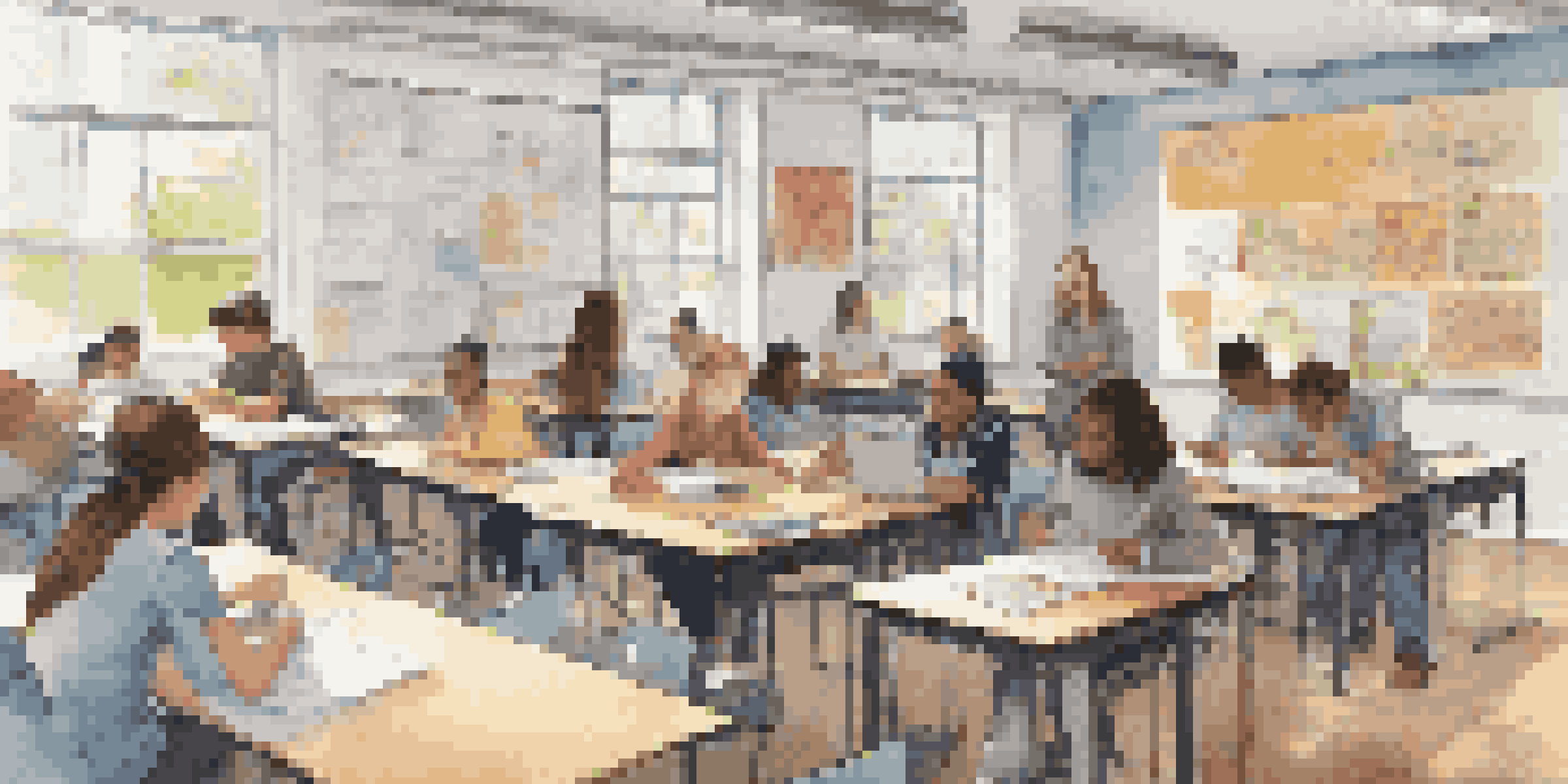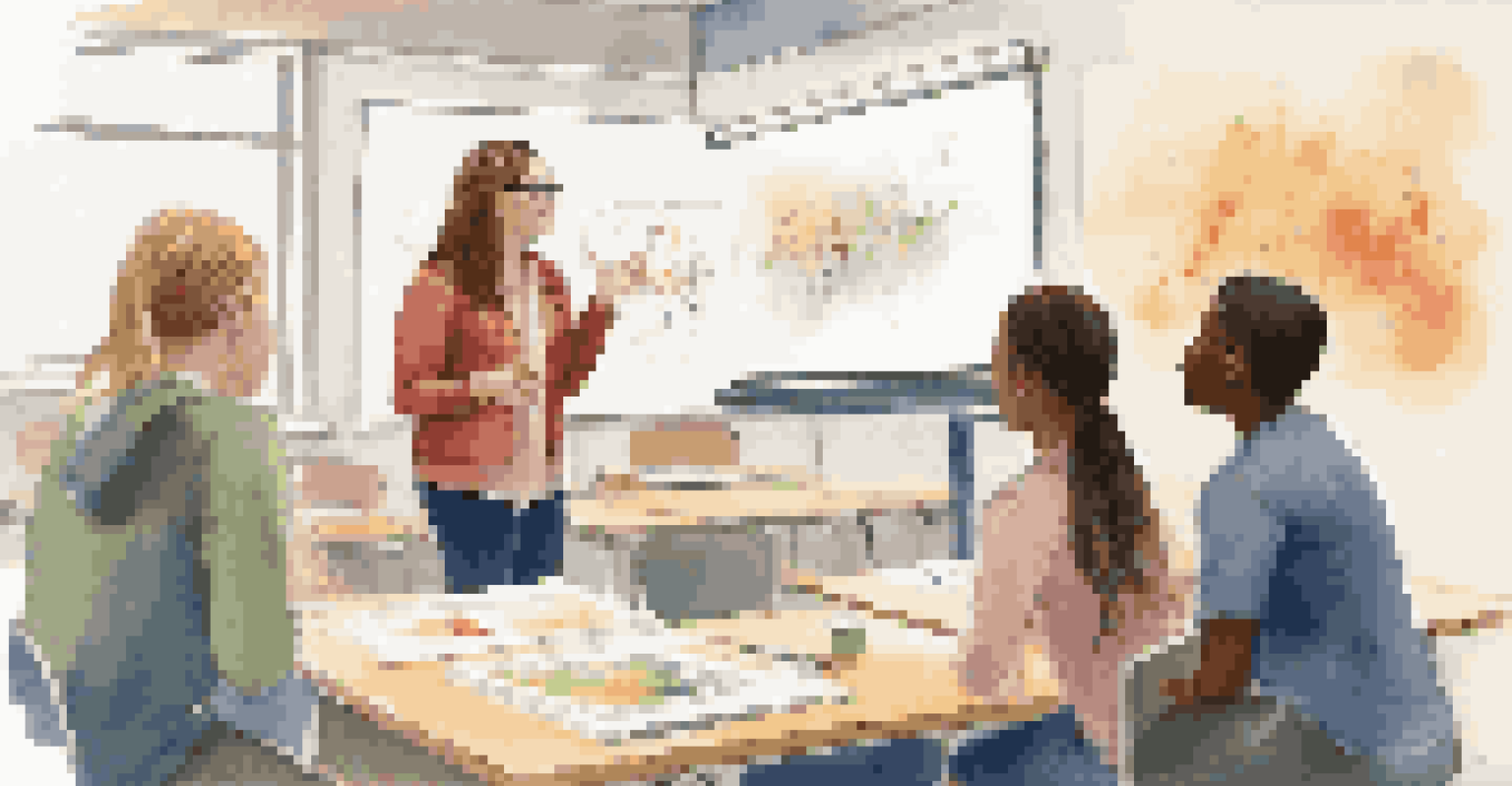Building Self-Directed Learning Skills in High School Curricula

Understanding Self-Directed Learning in High School
Self-directed learning (SDL) is an approach where students take initiative in their educational journey. It encourages them to set their own goals, find resources, and assess their progress. In high school, fostering SDL is crucial as students prepare for independent life after graduation.
Tell me and I forget. Teach me and I remember. Involve me and I learn.
This learning style empowers students to become active participants in their education, rather than passive recipients. For example, a student might choose to study a topic that intrigues them, researching it from various sources to gain a deeper understanding. This not only boosts their knowledge but also enhances critical thinking skills.
By integrating SDL into high school curricula, educators can help students develop essential skills such as time management, self-motivation, and problem-solving. These skills are not only valuable in academic settings but also in future workplaces and everyday life.
The Role of Educators in Fostering SDL
Teachers play a pivotal role in guiding students towards self-directed learning. By creating a supportive environment, they can encourage students to take charge of their own learning. This involves providing them with the tools and resources they need to succeed.

For instance, educators can introduce project-based learning, where students select their projects based on personal interests. This not only engages them but also allows them to explore topics more deeply. Additionally, teachers can facilitate discussions that encourage students to ask questions and seek answers independently.
Empower Students with SDL
Self-directed learning enables high school students to take charge of their education, fostering independence and critical thinking.
Moreover, educators can model self-directed learning behaviors themselves. By demonstrating curiosity and a love for learning, they inspire students to adopt similar attitudes, making SDL a natural part of their educational experience.
Incorporating Technology for Self-Directed Learning
Technology can serve as a powerful ally in promoting self-directed learning among high school students. Online resources, educational apps, and digital platforms provide students with a wealth of information at their fingertips. This accessibility encourages them to explore subjects beyond the classroom.
The only limit to our realization of tomorrow will be our doubts of today.
For example, students can use online courses to learn new skills or delve into topics of interest. Platforms like Khan Academy or Coursera offer a variety of subjects that cater to individual learning preferences. This flexibility allows students to learn at their own pace and on their own terms.
Additionally, technology fosters collaboration among students. They can connect with peers globally, exchange ideas, and work on projects together, further enhancing their learning experience. This collaborative environment not only builds knowledge but also encourages critical thinking and communication skills.
Setting Goals: A Key Component of SDL
Goal-setting is an essential aspect of self-directed learning, providing students with direction and motivation. When students set specific, measurable, achievable, relevant, and time-bound (SMART) goals, they can track their progress and celebrate their achievements. This practice cultivates a sense of ownership over their learning.
For instance, a student might set a goal to improve their math skills by dedicating 30 minutes daily to practice. By breaking down their goal into manageable tasks, they can see progress over time, which boosts their confidence. This process also teaches them the importance of persistence and discipline.
Role of Educators is Crucial
Teachers can guide self-directed learning by creating supportive environments and modeling curiosity.
Moreover, regular reflection on their goals can help students adapt and modify their learning strategies as needed. This reflective practice empowers them to take responsibility for their educational journey and fosters lifelong learning habits.
Encouraging a Growth Mindset in Students
A growth mindset is the belief that abilities and intelligence can be developed through dedication and hard work. Encouraging this mindset in high school students is crucial for fostering self-directed learning. When students understand that challenges are opportunities for growth, they are more likely to embrace learning with enthusiasm.
For example, educators can celebrate mistakes as valuable learning experiences rather than failures. Sharing stories of famous figures who overcame obstacles can inspire students to persist in the face of difficulties. This shift in perspective fosters resilience and motivates students to take risks in their learning.
By promoting a growth mindset, schools create an environment where students feel safe to explore new ideas and take ownership of their learning. This positive atmosphere not only enhances SDL but also prepares students for future challenges in life.
Creating a Supportive Learning Environment
A supportive learning environment is essential for fostering self-directed learning. High schools can cultivate this environment by encouraging collaboration, open communication, and respect among students. When students feel valued and supported, they are more likely to take initiative in their learning.
For example, schools can implement peer mentoring programs, where older students help younger ones navigate their educational journeys. This not only builds community but also reinforces the idea that learning is a shared experience. Students learn from each other, fostering a sense of belonging and mutual support.
Goal-Setting Drives Progress
Setting SMART goals helps students track their learning, promoting ownership and persistence in their educational journey.
Additionally, creating spaces that promote exploration and creativity, such as maker labs or study lounges, can encourage self-directed learning. When students have access to resources and a welcoming atmosphere, they are more inclined to take charge of their education and pursue their interests.
Evaluating and Reflecting on Learning Progress
Regular evaluation and reflection are integral components of self-directed learning. Students should be encouraged to assess their progress and reflect on their learning experiences. This practice helps them identify strengths, weaknesses, and areas for improvement.
For instance, keeping a learning journal can be an effective way for students to document their thoughts and feelings about their educational journey. By reviewing their entries, they can gain insights into their learning patterns and make informed decisions about their future goals. This reflective process enhances self-awareness and accountability.

Moreover, providing opportunities for self-assessment allows students to take ownership of their learning. They can set criteria for success and evaluate their performance against it, fostering a sense of accomplishment. This continuous cycle of evaluation and reflection is vital for developing lifelong learning skills.